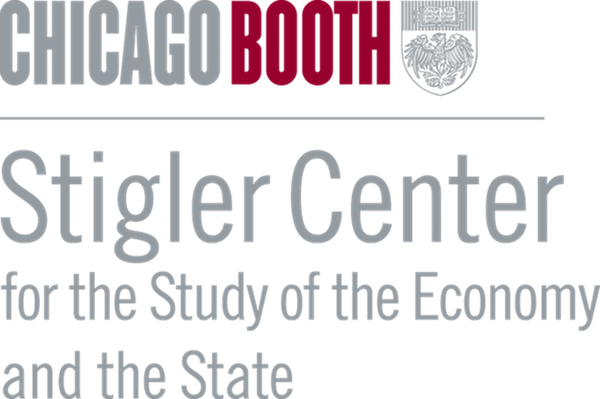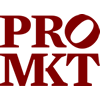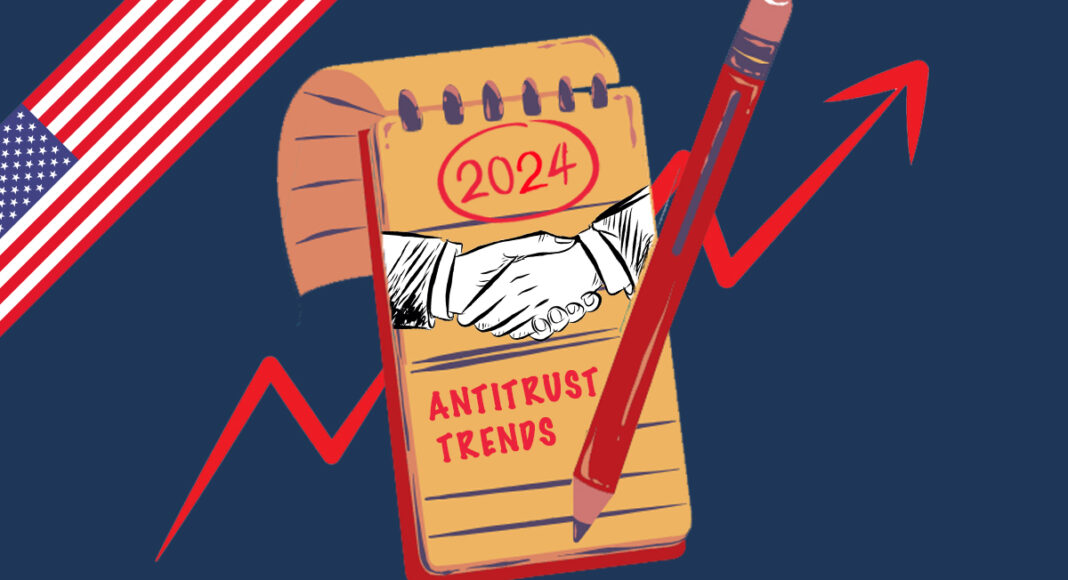Three antitrust experts review the trends and cases that defined United States antitrust in 2024.
Revival of Section 2 enforcement
Christine Bartholomew, University at Buffalo School of Law
In 2024, antitrust enforcers made significant strides in challenging alleged anticompetitive practices by industry giants. Suits against market leaders are not new, as antitrust laws aim to combat the dangers of economic dominance. What stands out this year is the means the enforcers used.
This year, enforcers dusted off an older tool that had been rarely seen of late: Section 2 of the Sherman Act. Take, for example, the numerous claims against Big Tech companies that dominated headlines. Antitrust enforcers filed new Section 2 claims against Amazon and Apple, while continuing to prosecute older cases like the Federal Trade Commission’s suit against Meta, originally filed in 2020.
2024 also saw the Department of Justice make good on its 2022 commitment to revive Section 2 enforcement, perhaps most prominently in this summer’s two trials against Alphabet (Google). In the Google ad tech case, the DOJ and eight states urged a finding of wrongdoing against Google, claiming the dominant search engine harmed competition through its advertising technology practices. This case followed the DOJ’s suit challenging Google’s online search dominance. The search engine suit, the first DOJ monopoly case in two decades, concluded in August with U.S. District Judge Amit Mehta ruling that Google illegally maintained its market dominance through exclusive dealing agreements.
Markets other than those operating in the digital economy also faced increased Section 2 enforcement. LiveNation, for example, saw renewed scrutiny by enforcers, and resounding criticism from Swifties everywhere, for its continued efforts to protect its dominance in the live entertainment industry. For Visa, enforcers once again questioned its business practices, this time for its alleged monopolization and other anticompetitive conduct in debit network markets.
This long overdue revitalized interest in monopoly enforcement demonstrated a significant shift towards holding dominant players accountable. As Assistant Attorney General Jonathan Kanter noted, addressing the “dearth of Section 2 case law” is crucial for adapting antitrust enforcement to contemporary economic realities. The future of these efforts, however, remains uncertain. Changes in administrations can shift government enforcement priorities, such as when the George W. Bush administration reversed course from the DOJ’s efforts under President Bill Clinton to break up Microsoft. Whether the momentum of 2024 will continue into 2025 and beyond will be a critical factor in shaping the competitive landscape and ensuring fair market practices.
Big swings and small steps in the healthcare sector
Barak Richman, George Washington University Law School
The Biden administration’s competition policy leaned towards big swings, pursuing large cases that both targeted large markets and aimed at expansions in antitrust law. This was as true for competition policy in the health sector as it was in internet platforms, labor markets, and other areas. And, at least in the health sector, it was probably a mistake. The antitrust agencies unfortunately can point to few successful efforts in stemming consolidation and corporatization of healthcare delivery, and the legacy from the past four years may be the neglected opportunities for smaller but meaningful victories.
The antitrust agencies’ oversized ambitions in healthcare translated into a number of signature enforcement actions. The Department of Justice unsuccessfully challenged the UnitedHealth-Change merger, hoping it could both advance vertical merger enforcement and apply platform economics to the health insurance industry. The Federal Trade Commission challenged U.S. Anesthesia Partner’s serial acquisitions, hoping to apply Section 2 to incipient monopolistic strategies while launching a broader attack at private equity. And there has been no loss of ambition in the waning days of the administration, as the FTC initiated a broad action against all three of the nation’s largest PBMs and the DOJ launched a comprehensive investigation of UnitedHealthcare. These two final actions, along with a preliminary investigation against group purchasing organizations, take aim at no less than the prevailing mechanisms underlying the nation’s healthcare supply chain.
In contrast, some lower-profile and more incremental initiatives have proved fruitful. The FTC continued its scrutiny of strategies that prolong exclusivity in pharmaceutical markets and supported several enforcement changes that would curb delays of generic drug entry. Explicitly drafting the Department of Health and Human Services as a contributor to competition policy, including a tri-agency inquiry on consolidation, was a signature accomplishment in the administration’s “all government competition policy.” And the FTC continued its dedication to slowing down consolidation in the hospital sector, mostly by committing to past policies and deterring merger attempts.
The Biden’s administration’s combination of successful incrementalism and mostly incomplete ambition was a significant departure from what most market actors ask for from enforcement agencies: predictable enforcement, bipartisan consensus, and evidence-based policy. It might be too much to hope that the next administration will return to bread-and-butter matters, where attention is most urgent. Messages from President-elect Donald Trump’s campaign suggested the opposite: a rolling back of merger enforcement yet praise for the FTC’s most aggressive actions. Quiet effectiveness is not a quality often associated with Trump, though it is a recipe for successful competition policy in America’s most troubled marketplace.
Even though we’ve seen a nationalization of politics, healthcare competition remains largely local, and it is in local markets where the need for more competition is most urgent. That means being attentive to small-scale market developments: stemming serial acquisitions of local clinics by large health systems, slowing the erosion of independent physicians from hospital takeovers, and encouraging new entry of primary care providers. Such policies would also generate the greatest value and require few agency resources. But they are unlikely to attract big headlines.
The return of labor antitrust
Theodosia Stavroulaki, Saint Louis University School of Law
2024 experienced a renaissance for antitrust in labor markets. In September 2024, the Federal Trade Commission promulgated a national ban (the Non-Compete Clause Rule) on most noncompete clauses, which prevent employees from working for competitors after leaving their jobs. The rule maintains that employers entering into noncompete agreements with workers constitutes a violation of Section 5 of the Federal Trade Commission Act. For existing noncompete clauses, the rule differentiates between workers and senior executives. For senior executives, the existing noncompete agreements remain enforceable. Noncompete agreements with any other worker, however, were to become void after the effective date, September 4, 2024. The FTC adopted this rule after initially proposing regulation banning all noncompete clauses and after taking into consideration studies illustrating the harm noncompetes cause on worker wages and employment conditions.
Indeed, a study examining the impact of noncompetes on wages found that banning noncompetes would increase average earnings for workers by 3.3% to 13.9%. Another study reached similar findings, demonstrating that after Oregon stopped enforcing noncompetes for hourly workers, their wages increased by 2% to 3%. Furthermore, after the FTC requested public comments on the effects of noncompete clauses on labor markets, numerous workers, especially in the healthcare industry, shined a light on the harms of noncompetes. For instance, several physicians underlined that the majority of noncompetes are unreasonable in terms of geographic scope, as they often prevent them from practicing medicine within a hundred miles of the employing hospital. Other physicians noted that because noncompetes significantly restrict mobility and the ability to seek alternative employment, noncompetes increase levels of burnout and stress, which harms productivity and ultimately the quality of care.
But these are not the only harms that noncompetes pose. Recently, studies have raised the concern that noncompetes also widen the gender and racial inequities in America. For instance, one study illustrated that strict enforceability of noncompetes reduces earnings for non-white and female workers “by twice as much as for White male workers.” Other researchers warn that female and minority workers are less likely than their white counterparts to negotiate the noncompetes that employers try to impose on them. Consequently, vulnerable communities suffer disproportionately from the harmful effects of non-competes: lower wages and bad working conditions.
Although the FTC’s Noncompete Rule could mitigate to a degree national gender, racial, and economic inequities, its fate remains uncertain. Following the rule’s adoption, several business groups filed lawsuits challenging its validity in Pennsylvania, Florida, Texas. Since then, federal judges in Texas and Florida have prevented the FTC from enforcing the ban. The story of the FTC’s Noncompete Rule has not ended yet as the FTC has appealed these decisions. In 2024, labor antitrust took a significant leap forward. Hopefully, it will stick its landing.
Authors’ disclosures: Christine Bartholomew and Theodosia Stavroulaki report no conflicts of interest. From August 2024 to June 2025, Barak Richman is serving part time as a Special Counsel for Competition Policy for the Department of Health and Human Services. The views expressed above are strictly his own. He reports no additional financial support or conflicts of interest. You can read our disclosure policy here.
Articles represent the opinions of their writers, not necessarily those of the University of Chicago, the Booth School of Business, or its faculty.






